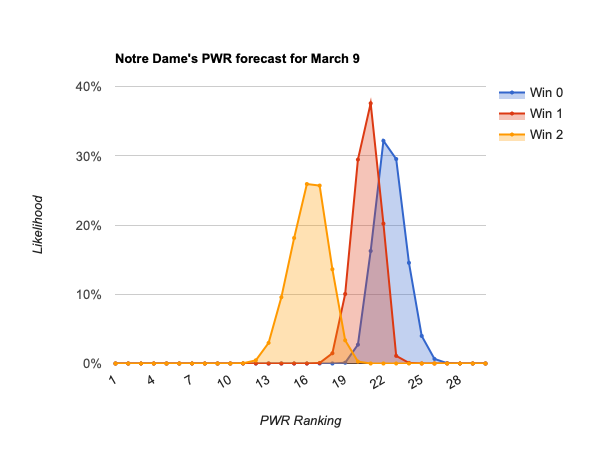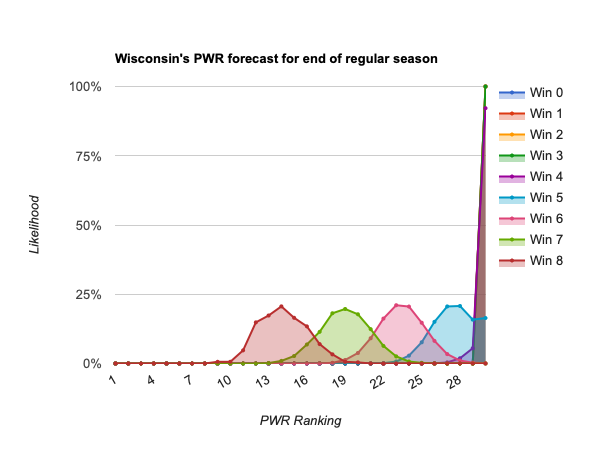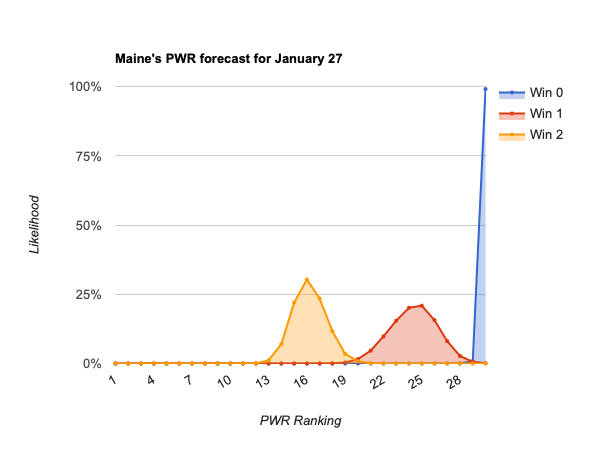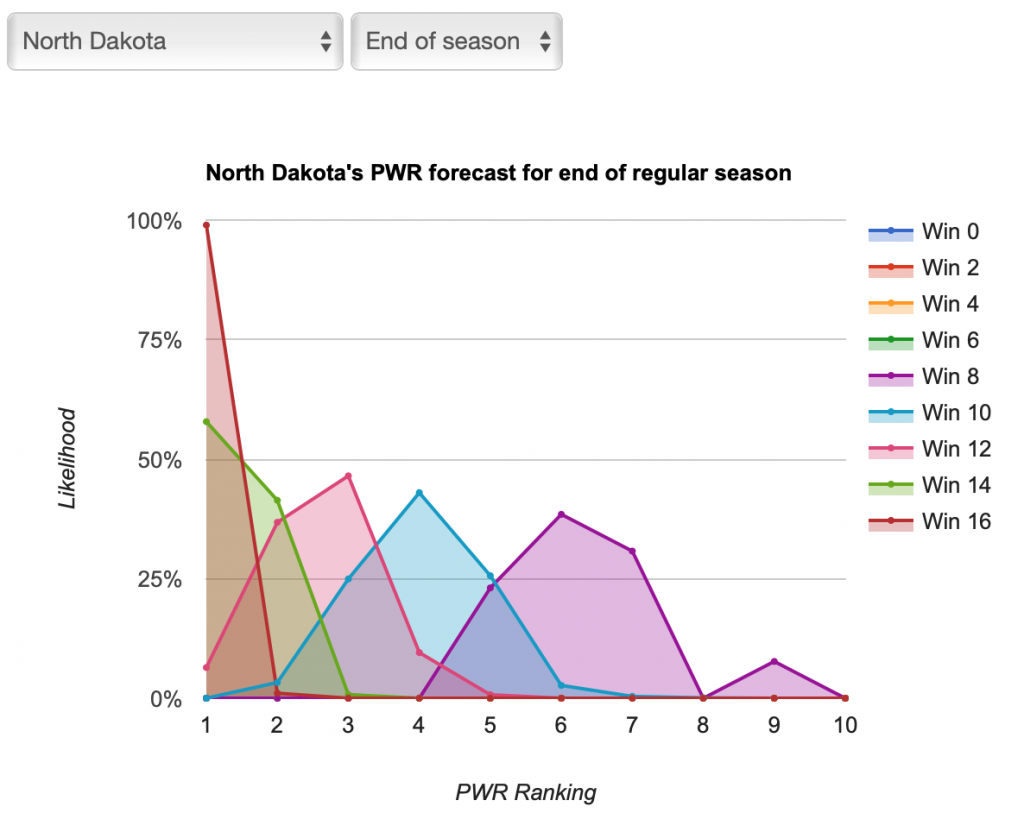I’m taking a break (indefinite?) from updating this site. There are a number of reasons now is the right time, but first a look back!
It’s been about 20 years that I’ve been independently calculating PWR, first at SiouxSports.com, then 8 years ago, launching this site. I did it because while there were a few other sources for the PWR table itself, I noticed that when my friends and I were discussing PWR, we were doing a lot of repetitive work that a computer could be doing. I felt that by making that information more accessible, I could add a lot to fans’ understanding of PWR.
What we were all always interested in about PWR was knowing what changes were likely, so my first innovation was the teams’ comparison details, which puts in front of the reader precisely how a teams’ PWR is calculated, making it much easier to guess at likely changes in the future.
About 15 years ago, I took it a step further, realizing that by simulating a weekend’s games, I could forecast likely PWR changes, based on whether a team wins or loses. This truly automated the work we all used to do notepads and the backs of envelopes, providing (somewhat) easy to interpret probability distributions of a teams’ likely PWR based its own performance. This sort of “UND needs to win about half its remaining games to get a bid” prediction was quite revolutionary at the time.
Finally, realizing that the reason we care about forecasting PWR is that we really want to know who’s going to make the tournament at the end of the season, I created the analysis of the wins needed to get a particular PWR rank table, which lets you see at a glance where every team is likely to fall based on its performance in its remaining games. I’m again proud of the simplicity of the presentation which, though it seems obvious in retrospect, was quite groundbreaking in making that sort of information accessible to everyone.
So why stop now? This year really is a perfect storm of conditions for me, as the amount of worked peaked right at a point my interest has fallen. First, because of the pandemic, I just haven’t paid attention to this site or college hockey much in the last two years. Second, over the years other have built on those innovations (imitation being the sincerest form of flattery), so me reviving this work is less necessary for the community. Third, the data source for college hockey scores that I (and the rest of the college hockey community) have been using for 20 years also shut down this year. Finally, the NCAA implemented the first major change to the PWR formula since 2013-14–crediting an OT win as only .55 of a win, thus necessitating a fair amount of work for me to get the rankings accurate again.
So, I’m going to hit the “pause” button on updating this site. Because I don’t want to post inaccurate information, I’ll take down the PWR/RPI tables, but as I mentioned above there are other great sources! I’ll leave the blog here as a historical archive for some time.
So long, and I’m sure I’ll see you around!



















